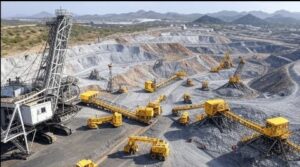Avino Silver & Gold Mines Ltd. (ASM: TSX.V, ASM: NYSE — MKT, GV6: FSE, "Avino" or "the Company") is pleased to announce that it has completed an updated Preliminary Economic Assessment ("PEA") of retreating the Avino mine tailings in Durango, Mexico, which includes the results from the Company's recent 2016 Resource Estimate (see news release dated September 26, 2016) for the Avino property which included the San Gonzalo Mine, the main Avino Mine system, and the property's Oxide Tailings. Summaries of the current resources used for the PEA, a preliminary Life of Mine Plan (LOMP), operating costs, capital costs and project economics are presented in tables below. The PEA has been prepared in accordance with National Instrument 43-101, and a compliant Technical Report is being completed by Tetra Tech Canada Inc. ("Tetra Tech"), and the PEA will be filed on SEDAR and with the U.S. Securities and Exchange Commission within 45 days of this release. All currency values are presented in US$ unless otherwise specified.
Highlights of the Oxide Tailings Preliminary Economic Assessment
- Significant pre-tax NPV8% of US$40.5 million
- Strong pre-tax IRR of 48.4%
- 2 year pay-back period
- Total capital expenditures of US$28.5 million
- 7 year mine life with LOM of 3.12 million tonnes of oxide tailings materials
Mr. David Wolfin, President and CEO stated, “We are extremely pleased with the very attractive economics of the Oxide Tailings Resource PEA. These positive results will enable us to plan the next steps, identify any additional studies and move forward in advancing the oxide tailings project. We intend to follow the recommendations contained in the Technical Report, which will include the pre-feasibility phase, and we continue to review alternative approaches for the storage of existing tailings.”
The Oxide Tailings deposit comprises historic recovery plant residue material deposited during the earlier period of open pit mining of the Avino Vein, when there were poor process plant recoveries for silver and gold. The oxide tailings are partially covered by younger unconsolidated sulphide tailings on the northwest side of the property.
Economic and Operational Highlights
The PEA incorporated Base Case metal prices of $18.50/oz silver, and $1,250/oz gold. Highlights of the Base Case economic estimates for the Oxide Tailings Resource are shown in the following table:
The base case PEA provides a solid foundation for focused growth and demonstrates the value of the existing infrastructure, and outlines a low capital cost option with attractive returns.
The PEA focuses on the Oxide Tailings Retreatment of the Avino mine as a stand alone project with an initial 7 year life of mine plan (“LOMP”). The Sulphides will be considered during the pre-feasibility study stage, and evaluated as to their own economic viability. This approach provides attractive economic returns using lower initial capital costs.
The Financial results for the base case are presented in the table below:
| Description | Base Case |
|---|---|
| Gold Price (US$/oz) | 1,250 |
| Silver Price (US$/oz) | 18.5 |
| Total Payable Metal Value (US$'000) | 148,892 |
| Refining (US$'000) | 6,123 |
| Transportation, Insurance (US$'000) | 214 |
| At-mine Revenue (US$'000) | 142,555 |
| Operating Costs (US$'000) | 47,034 |
| Operating Cash Flow (US$'000) | 95,521 |
| Pre-production Capital (US$'000) | 24,363 |
| Sustaining Capital (US$'000) | 4,352 |
| Salvage Value (US$'000) | -861 |
| Reclamation Cost (US$'000) | 606 |
| Total Capital Expenditure, Including Reclamation and Salvage (US$'000) | 28,460 |
| Cash Operating Costs (US$/oz Ag Payable, net of Au credit) | 2.21 |
| Capital Costs (US$/oz Ag Payable) | 4.85 |
| Total Costs (US$/oz Ag Payable) | 7.07 |
| Net Cash Flow (US$'000) | 67,061 |
| Discounted Cash Flow NPV (US$'000) at 5.00% | 48,922 |
| Discounted Cash Flow NPV (US$'000) at 8.00% | 40,554 |
| Discounted Cash Flow NPV (US$'000) at 10.00% | 35,786 |
| Payback (years) | 2.0 |
| IRR (%) | 48.4 |
The life of project average material tonnages, grades and metal production are shown below:
| Description | Value |
|---|---|
| Total Tonnes to Mill | 3,122,000 |
| Design Annual Tonnes to Mill | 500,000 |
| Plant availability | 90% |
| Mine Life (Years) | 7 |
| Average Grades | |
| Gold (g/t) | 0.43 |
| Silver (g/t) | 87.75 |
| Total Production | |
| Gold (ozs) | 33,000 |
| Silver (ozs) | 6,173,000 |
| Average Annual Production | |
| Gold (ozs) | 4,660 |
| Silver (ozs) | 881,920 |
- Excluding 1 year pre-production
PEA Study Parameters and basis of Financial Evaluations
The production schedule was incorporated into the 100% equity pre-tax financial model to develop annual recovered metal production from the relationships of tonnage processed, head grades, and recoveries.
Gold and silver payable values were calculated utilizing base case metal prices. Net invoice value was calculated each year by subtracting the applicable refining charges from the payable metal value. At-mine revenues are then estimated by subtracting transportation and insurance costs. Operating costs for mining, processing, and G&A were deducted from the at-mine revenues to derive annual operating cash flow.
Initial and sustaining capital costs as well as working capital have been incorporated on a year-by-year basis over the mine life. Salvage value and mine reclamation costs are applied to the capital expenditure in the last production year. Capital expenditures are then deducted from the operating cash flow to determine the net cash flow before taxes.
Initial capital expenditures include costs accumulated prior to first production of dore. Sustaining capital includes any capital expenditures required during the production period. Initial and sustaining capital costs applied in the economic analysis are US$24.36 million and US$4.35 million, respectively.
The Company cautions that the PEA is preliminary in nature in that it is based on Inferred Mineral Resources which are considered too speculative geologically to have the economic considerations applied to them that would enable them to be characterized as mineral reserves, and there is no certainty that the PEA will be realized. Mineral resources that are not mineral reserves do not have demonstrated economic viability.
Sensitivity Analysis
Sensitivities of the project’s NPV, IRR and payback period to the Project key variables were investigated. Using the base case as reference, all of the key variables were changed between -30%/+30% at a 10% interval while holding the other variables constant. The project NPV is most sensitive to the silver price, and in descending order gold price, operating costs; and capitals costs. The project IRR is most sensitive to the capital costs and the silver price, followed by the gold price and operating costs and the gold price. The payback period is also most sensitive to the silver price, followed by capital costs, operating costs and the gold price.
Post-Tax Economic Analysis
Avino commissioned PricewaterhouseCoopers ‘PwC’ in Mexico to prepare the tax component for the post-tax economic evaluation for this updated PEA with the inclusion of applicable income and mining taxes, and the results are as follows:
- Federal income taxes in Mexico are calculated using the currently enacted corporate rate of 30%
- A special mining duty (SMD) of 7.5% is applied to net profits and is paid annually and is deductible for tax purposes, resulting in an effective tax rate of 5.25%
- At the base-case gold and silver prices, the total estimated taxes payable are $26.32 million over the 7 year LOM, as shown below:
| Unit | Base Case | |
|---|---|---|
| Gold | US/oz | 1,250 |
| Silver | US/oz | 18.50 |
| Extraordinary Mining Duty | US$ million | 0.71 |
| Special Mining Duty | US$ million | 7.16 |
| Income Tax | US$ million | 18.4 |
| Total Tax | US$ million | 26.32 |
Summary of Post-tax Financial Results
| Unit | Base Case | |
|---|---|---|
| Gold | US/oz | 1,250 |
| Silver | US/oz | 18.50 |
| Undiscounted NCF | US$ million | 40.74 |
| NPV (at 5%) | US$ million | 28.01 |
| NPV (at 8%) | US$ million | 22.19 |
| NPV (at 10%) | US$ million | 18.8 |
| IRR | % | 32 |
| Payback | Years | 2.6 |
Capital and Operating Costs
All estimates are based on mining the Oxide Tailing resource only. The total capital costs including reclamation and salvage are estimated to be US$28.5 million. The process operating costs include agglomeration, heap leaching, followed by Merrill-Crowe refinery plant to produce a silver/gold doré. The operating cost estimate is reported in US dollars with an exchange rate of Mexican Peso to US Dollars at 12.5The operating cost estimate is sensitive to the exchange rate. The annual operating costs include:
- Staffing and maintenance manpower
- Power consumption based on the estimated power drawn by the equipment
- Reagent consumption rates and associated costs have been based on recent prices received from reagent suppliers
- Estimated maintenance cost
The operating cost summary for the processing facility and the G&A costs is based on a processing design rate of 1,370 t/d (500,000 tonnes per year) with an availability of 90% and 365 operating days per year resulting in an effective annual production rate pf 450,000 tonnes.
The yearly average annual operating cost for the process facilities is estimated to be US$15.06/tonne of tailings treated at the processing rate of 1,370 tonnes per day, as shown in the table below:
Operating Cost Summary:
| Description | Personnel | Unit Cost (US$/treated) |
|---|---|---|
| Mining | 15 | 1.13 |
| Process | 39 | 12.53 |
| G&A | 11 | 1.41 |
| Total Operating Cost | 65 | 15.06 |
Mineral Processing, Metallurgical Testing and Recovery Methods
Tetra Tech used the estimated grade values and test work results as reported by MineStart Management Inc. (MMI) and Process Research Associates Ltd. (PRA), who conducted the metallurgical tests, to develop the process flowsheet. The investigated metal recovery methods included gravity separation, flotation, tank cyanide leach, and heap leach processing options. According to preliminary economical evaluations, a heap leach followed by gold and silver recovery using Merrill Crowe process was selected for the PEA study.
Mining Methods
The oxide tailings mineral resource will be mined/moved using a conventional truck/loader surface mining method. The Production cycle consists of loading and trucking. The Loading/trucking operations will be conducted in two 12 hour shifts per day. A 3.85 m3 rated (5.0 yd3) front-end loader will be used to load three, 24 tonne articulated trucks that will either deliver the sulphide tailings to the sulphide waste stockpile or the oxide tailings to the oxide tailings hopper. The Production schedule has been developed for the oxide tailings based on a treatment rate of 500 kt/a, this would be equivalent to a throughput rate of 1,370 t/d. This will give an overall project duration of approximately eight years. This eight-year period includes a one-year pre-production period and excludes the time required for remediation of the heap after the leaching process has been completed. Only oxide tailings will be considered for treatment while sulphide materials will be considered waste at this time. The LOM total oxide tailings materials treated is 3.12 million tonnes with average grades of 87.75 g/t silver and 0.43 g/t gold.
Environmental
Environmental parameters, permits and registrations, and environmental management strategies that may be required for the Project will be summarized in the technical report. Permits and authorizations required for the operation of the Project may include an operating permit, an application for surface tenures, a waste water discharge registration, a hazardous waste generator's registration, and an Environmental Impact Assessment (EIA) or Evaluación de Impacto Ambiental. Acid-base accounting (ABA) tests have indicated that mild acid generation may already have started on the tailings dam. A gap analysis and additional tests to further characterize current conditions of the tailings should be completed to properly design a tailings management plan.
Mineral Resource Discussions
Oxide Tailings
A mineral resource was estimated for the oxide tailings generated from prior historical mining operations, using ordinary kriging (OK) interpolation and uncapped grades. The assay values for this estimate are based on 28 drill holes, which were completed on the tailings by CMMA in 1990, and include 407.75 m of drilling and 383 assays of both gold and silver. The oxide tailings are estimated to contain a 2.34 Mt inferred mineral resource at a grade of 91.3 g/t silver and 0.54 g/t gold, with a 50 g/t silver cut-off. The entire resource is classified as an inferred mineral resource, based on the historical nature of the drilling (prior to the institution of NI 43-101 and associated quality assurance/quality control (QA/QC) requirements). Verification samples collected confirmed the presence of gold and silver mineralization at grades similar to those obtained in the original tailings drilling campaign and confirmed that the Mine's lab assays are not materially different from those of external labs. It is QG Australia (Pty) Ltd.’s opinion that the oxide tailings sampling data are considered sufficient to support the purpose of the Technical Report and a current inferred mineral resource.
Mineral Resources
The Company’s August 2016 mineral resource estimate was used as the resource base for the PEA. This new estimate includes data from 57 holes drilled during the last two years. Due to closer drill hole spacing, there is sufficient information to justify elevating 1,330,000 tonnes of the previous 2,340,000 tonnes of inferred resources to the indicated category. However, there is still an additional inferred resource of 1,810,000 tonnes in the new estimate. The oxide tailings resource is accessible on surface and contains significant gold and silver grades. The resource estimate used in the PEA for the oxide tailing resource is outlined in the table below at a cut-off grade of 50 AgEQ g/t.
Measured & Indicated Mineral Resources | Grade | Metal Contents | ||||||||
|---|---|---|---|---|---|---|---|---|---|---|
| Resource Category | Deposit | Cut-off (AgEQ g/t) | Metric Tonnes | AgEQ g/t | Ag g/t | Au g/t | Cu% | Ag Million Tr Oz | Au Thousand Tr Oz | Cu T |
| Indicated | Oxide Tailings | 50 | 1,330,000 | 124 | 98 | 0.46 | 0.00 | 4.2 | 19.8 | 0 |
| Inferred | Oxide Tailings | 50 | 1,810,000 | 113 | 88 | 0.44 | 0.00 | 5.1 | 25.6 | 0 |
Note on Mineral Resources
Mineral resources that are not mineral reserves do not have demonstrated economic viability. The PEA is preliminary in nature as it includes inferred mineral resources that are considered too speculative geologically to have the economic considerations applied to them that would enable to them to be categorized as mineral reserves. At this time there is no certainty that the results of the PEA will be realized.
Recommendations
The Technical Report contains the following recommendations for further work:
Resource Estimates
- In order to improve confidence in the inferred mineral resource of the oxide tailings and evaluate the overlying sulphide tailings, a sonic drill program of 90 holes with 50 m x 50 m drill collar spacing totaling 1,800 m is recommended.
- Resource estimates for the ET Zone of the Avino vein, the San Gonzalo vein and tailings should be completed for mine planning purposes.
- The drill hole database should be consolidated and mining depletions updated before the estimation is performed.
Process
- Take sufficient amounts of samples from both oxide and sulphide tailings to obtain representative samples for assay and metallurgical test work to confirm the grade of the deposit and the recovery of silver and gold from the heap leach process.
- Use the results from the metallurgical test work program to confirm/define the duration of leaching on the pad, the reagent consumption values and the silver and gold precipitation efficiencies.
- Investigate the metallurgical performance of the sulphide tailings materials and develop the process method for the sulphide tailings materials, including co-processing the sulphide tailings with the oxide tailings.
Environmental
A detailed trade-off study should be undertaken to characterize current conditions of the sulphide tailings and to determine whether the re-treatment of this material would contribute to the profitability of the Project.
Qualified Person(s)
The Qualified Persons as defined by NI 43-101, who supervised and are responsible for the Technical Report on the Oxide Tailings Retreatment of the Avino Mine, and have reviewed the scientific, technical and financial content of this news release, are Hassan Ghaffari, MASc., P.Eng., P.Eng, Jianhui Huang, PhD., P.Eng, of Tetra Tech Canada Inc., Sabry Abdel?Hafez, PhD., (previously with Tetra Tech Canada Inc.) and Michael O’Brien P.Geo., Pr.Sci.Nat., who is an employee of QG Australia Pty Ltd (an ARANZ Geo Company) and independent of Avino, as defined by Section 1.5 of NI 43-101. The Technical Report for the PEA will be filed on SEDAR with 45 days of this release.
Avino's projects are under the supervision of Chris Sampson, P.Eng, Avino Consultant and Jasman Yee P.Eng, Avino Director, who are both qualified persons within the context of National Instrument 43-101. Both have reviewed and approved the technical data in this news release.
About Avino
Avino's is a silver and gold producer with a diversified pipeline of gold, silver and base metals properties in Mexico and Canada employing approximately 500 people. Avino produces from its wholly owned Avino and San Gonzalo Mines near Durango, Mexico, and is currently planning for future production at the Bralorne Gold Mine in British Columbia, Canada. The Company’s gold and silver production remains unhedged. The Company’s mission and strategy is to create shareholder value through its focus on profitable organic growth at the historic Avino Property near Durango, Mexico, and the strategic acquisition of mineral exploration and mining properties. We are committed to managing all business activities in an environmentally responsible and cost-effective manner, while contributing to the well-being of the communities in which we operate.
On Behalf of the Board
“David Wolfin”
________________________________
David Wolfin
President & CEO
Avino Silver & Gold Mines Ltd.
Safe Harbor Statement – This news release contains "forward-looking information" and "forward-looking statements" (together, the "forward looking statements") within the meaning of applicable securities laws and the United States Private Securities Litigation Reform Act of 1995, including our belief as to the extent and timing of various studies including the PEA, and exploration results, anticipated capital costs and operational costs, the potential tonnage, grades and content of deposits, timing and establishment and extent of resource estimates. These forward-looking statements are made as of the date of this news release and the dates of technical reports, as applicable. Readers are cautioned not to place undue reliance on forward-looking statements, as there can be no assurance that the future circumstances, outcomes or results anticipated in or implied by such forward-looking statements will occur or that plans, intentions or expectations upon which the forward-looking statements are based will occur. While we have based these forward-looking statements on our expectations about future events as at the date that such statements were prepared, the statements are not a guarantee that such future events will occur and are subject to risks, uncertainties, assumptions and other factors which could cause events or outcomes to differ materially from those expressed or implied by such forward-looking statements.
Such factors and assumptions include, among others, the effects of general economic conditions, the price of gold, silver and copper, changing foreign exchange rates and actions by government authorities, uncertainties associated with legal proceedings and negotiations and misjudgments in the course of preparing forward-looking information. In addition, there are known and unknown risk factors which could cause our actual results, performance or achievements to differ materially from any future results, performance or achievements expressed or implied by the forward-looking statements. Known risk factors include risks associated with project development; the need for additional financing; operational risks associated with mining and mineral processing; fluctuations in metal prices; title matters; uncertainties and risks related to carrying on business in foreign countries; environmental liability claims and insurance; reliance on key personnel; the potential for conflicts of interest among certain of our officers, directors or promoters with certain other projects; the absence of dividends; currency fluctuations; competition; dilution; the volatility of the our common share price and volume; tax consequences to U.S. investors; and other risks and uncertainties as set forth in our regulatory filings in Canada and the U.S.. Although we have attempted to identify important factors that could cause actual actions, events or results to differ materially from those described in forward-looking statements, there may be other factors that cause actions, events or results not to be as anticipated, estimated or intended. There can be no assurance that forward-looking statements will prove to be accurate, as actual results and future events could differ materially from those anticipated in such statements. Accordingly, readers should not place undue reliance on forward-looking statements. We are under no obligation to update or alter any forward-looking statements except as required under applicable securities laws.
Cautionary Note to United States Investors – The information contained herein and incorporated by reference herein has been prepared in accordance with the requirements of Canadian securities laws, which differ from the requirements of United States securities laws. In particular, the term "resource" does not equate to the term "reserve". The Securities Exchange Commission's (the "SEC") disclosure standards normally do not permit the inclusion of information concerning "measured mineral resources", "indicated mineral resources" or "inferred mineral resources" or other descriptions of the amount of mineralization in mineral deposits that do not constitute "reserves" by SEC standards, unless such information is required to be disclosed by the law of the Company's jurisdiction of
ncorporation or of a jurisdiction in which its securities are traded. U.S. investors should also understand that "inferred mineral resources" have a great amount of uncertainty as to their existence and great uncertainty as to their economic and legal feasibility. Disclosure of "contained ounces" is permitted disclosure under Canadian regulations; however, the SEC normally only permits issuers to report mineralization that does not constitute "reserves" by SEC standards as in place tonnage and grade without reference to unit measures.
Neither the TSX Venture Exchange nor its Regulation Services Provider (as that term is defined in the policies of the TSX Venture Exchange) accepts responsibility for the adequacy or accuracy of this release.
Original Article: http://www.avino.com/s/news.asp?ReportID=785546
















